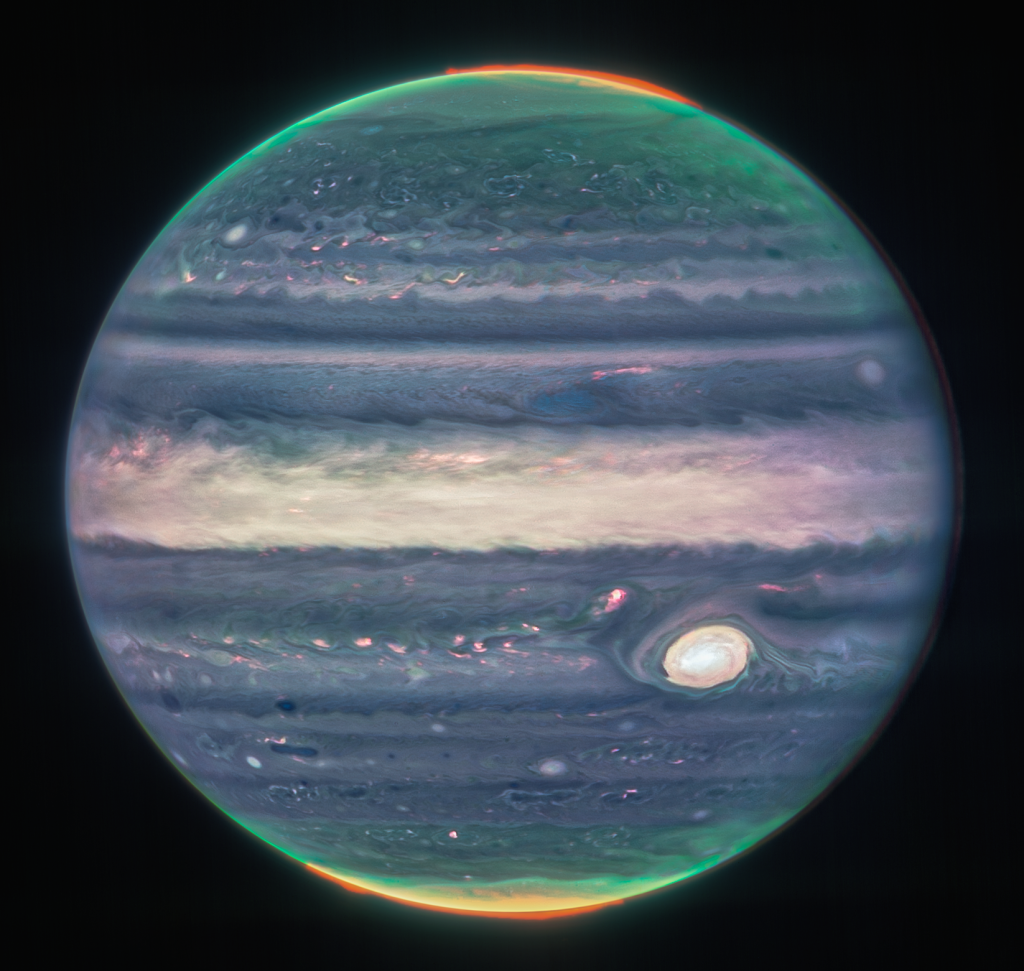Leicester scientists help uncover Jupiter’s secrets

James Webb Space Telescope images of Jupiter display a stunning wealth of detail. Image credit NASA, European Space Agency, Jupiter Early Release Science team. Image processing Judy SchmidtScientists who revealed stunning views of Jupiter with the new £10 billion James Webb Space Telescope hope more planets will soon give up their secrets.
Ground-breaking infrared images of Jupiter have been revealed this week as part of a programme of giant planet observations by the world-famous space telescope.
Professor Leigh Fletcher, of the Planetary Science Group at the University of Leicester and Space Park Leicester, is leading part of the space telescope’s giant planet observations programme.
He said: “This incredible telescope was built to study the early universe and the distant cosmos, but it’s also a fantastic new tool for planetary science and exploring our solar system.
“Jupiter is a big, bright, rotating and moving target that makes it a supreme challenge for observations. Indeed, it’s so bright that it often saturates all our detectors. We were therefore delighted to see the amazing quality of the NIRCAM images.
“These new images have revealed bright storms of fresh ice on Jupiter, bands of different reflectivity, the swirling Great Red Spot and the auroral lightshow on both poles of the planet. We’ve never seen Jupiter in so much incredible detail before.
“This is incredibly exciting and over the next year we’ll be undertaking observations of Saturn, Uranus and Neptune as well as more observations of Jupiter. We can’t wait to see what we discover next.”
Professor Fletcher and his team work primarily with the spectroscopic instruments on the space telescope, namely its Mid-InfraRed Instrument (MIRI) and Near Infrared Spectrograph (NIRSpec). The Leicester team is part of the international consortium that released the breath-taking NIRCAM images this week.
The Planetary Science Group at Leicester has a wealth of expertise in exploring the giant planets, from their churning atmospheres to their auroral lightshows and the surfaces of their diverse and potentially-habitable satellites.
Reacting to the new images, STFC Webb Fellow Dr Henrik Melin, an expert in planetary ionospheres in the Planetary Science Group, said “Amazing – does it get any better than this? This is only the very beginning of planetary science with JWST.”
The space telescope programme follows the group’s work on the Cassini mission to Saturn, the Juno mission to Jupiter and the forthcoming European Space Agency (ESA) JUICE mission to Jupiter’s satellites.
The University of Leicester’s £100 million space research and innovation facility, Space Park Leicester, is also part of the WebbUK consortium.
At the beginning of July, it was one of only a handful of venues chosen by ESA to showcase the very first images to emerge from the space telescope. They included the best view yet of distant galaxies and light from 13 billion years ago. For further information about the University of Leicester visit https://le.ac.uk


